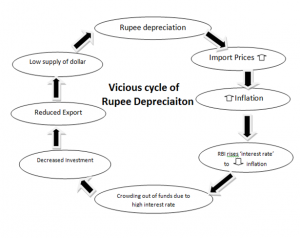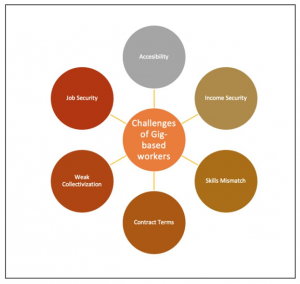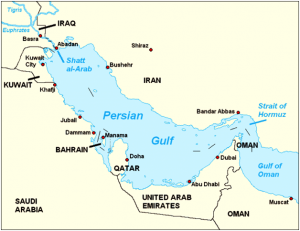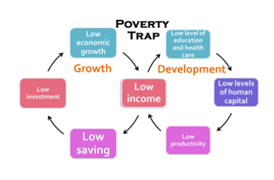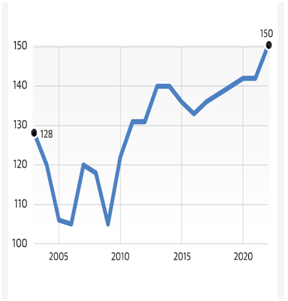TOPIC : AN ANALYSIS OF THE OCEAN CONFERENCE 2022
THE CONTEXT: With climate change, biodiversity loss and pollution exacting a devastating toll on the world’s ocean — critical to food security, economic growth and the environment; the 2022 UN Ocean Conference was held in Lisbon, Portugal from 27 June – 1st July 2022, with a call for a new chapter of ocean action driven by science, technology and innovation.This article presents the complete picture of the present situation and the way forward for healthier oceans.
ABOUT THE CONFERENCE:
- The UN (United Nations) Ocean Conference 2022 was held to ensure global cooperation toward the protection and sustenance of the Ocean ecosystem of the world.
- Co-Hosted by: Governments of Kenya and Portugal
- Aim: To propel much-needed science-based innovative solutions aimed at starting a new chapter of global ocean action.
- Theme: Scaling up Ocean Action Based on Science and Innovation for the Implementation of Goal 14: stocktaking, partnerships and solutions; in line with the UN Decade of Ocean Science for Sustainable Development, stresses the critical need for scientific knowledge and marine technology to build ocean resilience.
KEY AGENDA OF THE CONFERENCE
MORATORIUM ON DEEP-SEA MINING
- Push for a moratorium on deep-sea mining of rare metals needed for a boom electric vehicle battery construction.
- The digging and gauging of the ocean floor by machines can alter or destroy deep-sea habitats.
CARBON SEQUESTRATION
- Focus on carbon sequestration to boost the ocean’s capacity to soak up CO2, by either enhancing natural sinks such as mangroves or through geoengineering schemes.
BLUE DEAL
- A “Blue Deal” was promoted to enable the sustainable use of ocean resources for economic growth.
- It includes global trade, investment and innovation to create a sustainable and resilient ocean economy.
- Focus on blue food to ensure marine harvests from all sources are sustainable and socially responsible.
HIGH SEAS ARE UNREGULATED
- No comprehensive legal framework covers the high seas. Oceans cover some 70% of the earth’s surface and provide food and livelihoods for billions of people.
- Some activists refer to them as the largest unregulated area on the planet.
THREAT TO OCEAN
- Threats to the oceans include global warming, pollution (including plastic pollution), acidification, marine Heatwaves etc.
ABOUT LISBON DECLARATION
At the UN Ocean Conference 2022, all 198 members of the United Nations unanimously adopted the Lisbon Declaration on ocean conservation.
AIM
- To follow science-based and innovative actions on an urgent basis.
- It sends a strong signal to urgently improve the health, sustainable use and resilience of the ocean.
NEED
- It was recognised that developing countries, particularly small island developing states and least developed countries, need assistance with capacity building.
FOCUS AREAS
- Participants at the conference also agreed to work on preventing, reducing and controlling marine pollution. It includes:
- Nutrient pollution
- Untreated wastewater
- Solid waste discharges
- Hazardous substances
- Emissions from the maritime sector, including shipping, shipwrecks
- Anthropogenic underwater noise
SIGNIFICANCE
- Sustainable ocean-based economies: developing and promoting innovative financing solutions to help create sustainable ocean-based economies as well as expanding nature-based solutions to help conserve and preserve coastal communities.
- Restoring harmony with nature through a healthy, productive, sustainable and resilient ocean is critical for our planet, our lives and our future.
OCEANS AND SDG-14
- The ocean covers 70 per cent of the Earth’s surface, is the planet’s largest biosphere, and is home to up to 80 per cent of all life in the world. It generates 50 per cent of the oxygen we need, absorbs 25 per cent of all carbon dioxide emissions and captures 90 per cent of the additional heat generated from those emissions. It is not just ‘the lungs of the planet’ but also its largest carbon sink – a vital buffer against the impacts of climate change.
- It nurtures unimaginable biodiversity and produces food, jobs, and mineral and energy resources needed for life on the planet to survive and thrive. There is a great deal we still do not know about the ocean but there are many reasons why we need to manage it sustainably – as set out in the targets of Sustainable Development Goal 14: Life Below Water.
- The oceans are facing unprecedented threats as a result of human activities. Its health and ability to sustain life will only get worse as the world population grows and human activities increase. If we want to address some of the most defining issues of our time such as climate change, food insecurity, diseases and pandemics, diminishing biodiversity, economic inequality and even conflicts and strife, we must act now to protect the state of our ocean.
- SDGs adopted in 2015 as an integral aspect of the 2030 Agenda for Sustainable Development and its set of 17 transformative goals, Goal 14 stresses the need to conserve and sustainably use the world’s oceans, seas and marine resources. Advancement of Goal 14 is guided by specific targets that focus on an array of ocean issues, including reducing marine pollution, protecting marine and coastal ecosystems, minimizing acidification, ending illegal and over-fishing, increasing investment in scientific knowledge and marine technology, and respecting international law that calls for the safe and sustainable use of the ocean and its resources.
OTHER INITIATIVES TO ENSURE A SUSTAINABLE OCEAN ECOSYSTEM
DECADE OF OCEAN SCIENCE FOR SUSTAINABLE DEVELOPMENT
- The UN has proclaimed a Decade of Ocean Science for Sustainable Development (2021-2030) to support efforts to reverse the cycle of decline in ocean health and gather ocean stakeholders worldwide behind a common framework that will ensure ocean science can fully support countries in creating improved conditions for sustainable development of the Ocean.
ONE OCEAN SUMMIT
- The goal of the One Ocean Summit (Feb 2022) is to raise the collective level of ambition of the international community on marine issues.
- Commitments will be made toward combating illegal fishing, decarbonising shipping and reducing plastic pollution.
- Will also focus on efforts to improve governance of the high seas and coordinate international scientific research.
WORLD OCEANS DAY
- 8th June is World Oceans Day, the United Nations day for celebrating the role of the oceans in our everyday life and inspiring action to protect the ocean and sustainably use marine resources.
MARINE PROTECTED AREAS
- A Marine Protected Area (MPA) is a marine area that provides protection for all or part of the natural resources it contains.
- Within an MPA, certain activities are limited, or entirely prohibited, to meet specific conservation, habitat protection, ecosystem monitoring or fisheries management objectives.
- MPAs do not necessarily exclude fishing, research or other human activities; in fact, many MPAs are multi-purpose areas.
GLO LITTER PARTNERSHIPS PROJECT
- It is launched by the International Maritime Organization (IMO) and the Food and Agriculture Organization of the UNs (FAO) and initial funding from the Government of Norway. It is aimed to prevent and reduce marine plastic litter from shipping and fisheries.
INDIA- NORWAY OCEAN DIALOGUE
- In 2019, the Indian and Norwegian governments agreed to work more closely on oceans by signing an MoU and establishing the India-Norway Ocean Dialogue.
INDIA’S DEEP OCEAN MISSION
- It is a mission mode project to support the Blue Economy Initiatives of the Government of India.
INDIA’S INDO-PACIFIC OCEANS INITIATIVE (IPOI)
- It is an open, non-treaty-based initiative for countries to work together for cooperative and collaborative solutions to common challenges in the region.
- It draws on existing regional architecture and mechanisms to focus on seven pillars:
- Maritime Security
- Maritime Ecology
- Maritime Resources
- Capacity Building and Resource Sharing
- Disaster Risk Reduction and Management
- Science, Technology and Academic Cooperation
- Trade Connectivity and Maritime Transport
SOLUTIONS NECESSARY TO OVERCOME CHALLENGES IN ACHIEVING GOAL 14
INTEGRATED OCEAN MANAGEMENT
- Planning and decision-making, through improving our understanding of the impact of cumulative human activities on the ocean and anticipating the impacts of planned activities and eliminating or minimizing their negative effects, as well as the effectiveness of adopted measures.
IMPLEMENTING SCIENCE-BASED MANAGEMENT PLANS
- Use of an ecosystem approach to fisheries that protects essential habitats and promotes collaborative processes for decision-making that include all stakeholders, including small-scale and artisanal fisheries, recognizing their role in poverty eradication and ending food insecurity.
- To minimize waste, unwanted by-catch and discards, as well as combat illegal, unreported and unregulated fishing including through technological tools for monitoring.
SUSTAINABLE AQUACULTURE
- Mobilizing actions for sustainable fisheries and sustainable aquaculture for sufficient, safe and nutritious food, recognizing the central role of healthy oceans in resilient food systems and achieving the 2030 Agenda.
CONTROLLING MARINE POLLUTION
- Preventing, reducing and controlling marine pollution of all kinds, from:both land- and sea-based sources, including nutrient pollution, untreated wastewater, solid waste discharges, hazardous substances,
- Emissions from the maritime sector: including shipping, pollution from shipwrecks and anthropogenic underwater noise, through improving our understanding of their sources, pathways and impacts on marine ecosystems.
- Preventing, reducing, and eliminating marine plastic litter, including single-use plastics and microplastics through:
- contributing to comprehensive life-cycle approaches,
- encouraging resource efficiency,
- recycling as well as environmentally sound waste management,
- ensuring sustainable consumption and production patterns,
- developing viable alternatives for consumer and industrial uses.
AREA-BASED MANAGEMENT TOOLS
- Effectively planning and implementing area-based management tools, including effectively and equitably managed, ecologically representative and well-connected Marine Protected Areas, and
- Other effective area-based conservation measures, integrated coastal zone management and marine spatial planning.
- by assessing their multiple ecological, socio-economic and cultural value and applying the precautionary and ecosystem-based approach, in accordance with national legislation and international law.
MEASURES TO MITIGATE AND ADAPT TO CLIMATE CHANGE
- Developing and implementing measures to mitigate and adapt to climate change, and avert, minimize and address loss and damage, reducing disaster risk and enhancing resilience by
- increasing the use of renewable energy technologies, especially ocean-based technologies,
- reducing the risk of and preparing for ocean-related extreme weather events,
- development of multi-hazard early warning systems
- integrating ecosystem-based approaches for disaster risk reduction at all levels and across all phases of disaster risk reduction and management,
- reducing emissions from maritime transportation, including shipping, and
- implementing nature-based solutions for carbon sequestration and the prevention of coastal erosion
THE ANALYSIS:
- The outcomes of the Ocean Conference 2022 call for a well-deserved applause. Nevertheless, it is important that we build on this extraordinary momentum, to accelerate post-Lisbon-progress towards a healthy, productive and resilient ocean with thriving marine and coastal species, ecosystems and communities and, moreover, the next generation of blue leaders and entrepreneurs.
- Now is the time to be bold, visionary and pragmatic, so that by 2030 we can collectively achieve at least 30% protection and 100% sustainable management of our ocean for the benefit of humankind and our world.
- The IPCC Sixth Assessment Report cautions that we have a “brief and rapidly closing window of opportunity to secure a liveable and sustainable future for all”. Now that the global ocean community has come together in Lisbon, it is even more critical to follow through to ensure that key conventions and processes adopt decisive actions for the Ocean.
THE WAY FORWARD:
- No comprehensive legal framework covers the high seas. Oceans cover some 70% of the earth’s surface and provide food and livelihoods for billions of people. Some activists refer to them as the largest unregulated area on the planet. There shall be a comprehensive legal framework which covers the high seas.
- The conference also adopted a declaration that, though not binding on its signatories, could help implement and facilitate the protection and conservation of oceans and their resources. This calls for moral and ethical commitments by the nations and they shall adhere to them.
- Allocating funds to research on ocean acidification, climate resilience and surveillance.
- Scaling up Science-based and innovative actions to address ocean emergencies.
THE CONCLUSION: Without healthy ocean life, our planet as we know would not exist. We must seek to right the wrongs we have done against our children and grandchildren, turn the tide on our irresponsible stewardship and build momentum for a future where humanity can once again live in harmony with nature. The UN Ocean Conference 2022 is a step in the right direction and we shall build over it and act proactively for the sake of our HOME.
Mains Practice Questions:
- The ocean is fundamental to life onº our planet and to our future. Elaborate on the commitments made by the nations at the UN Ocean Conference 2022.
- Science-based innovative actions, international cooperation and partnerships based on science, technology and innovation are much needed to protect our oceans and achieve the targets set under Goal 14 of the SDGs. Elaborate.
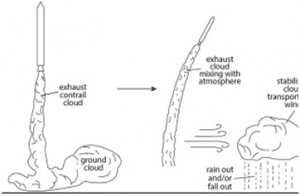 atmosphere. These soot particles have a far larger impact on the climate than all other sources of soot combined, as BC particles are almost 500 times more efficient at retaining heat.
atmosphere. These soot particles have a far larger impact on the climate than all other sources of soot combined, as BC particles are almost 500 times more efficient at retaining heat. world economy.
world economy.





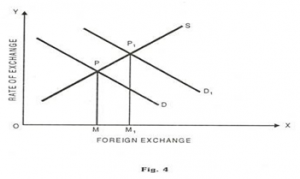 foreign money and not exclusively the function of prices obtained between two countries.
foreign money and not exclusively the function of prices obtained between two countries.